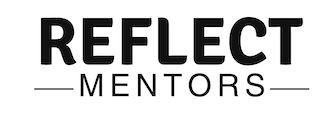Before reading this article, read “White Paper: Cross-functional Synergy in Product Development.” to learn about how cross-functional synergy works. In this article, we are talking about Measuring Cross-Functional Collaboration Success in Product Development.
Ever wondered how to truly measure the success of cross-functional collaboration within your product development teams? It’s not just about feeling that things are going well; it’s about having tangible metrics and KPIs that showcase the results. Let’s dive in!
1. Key Performance Indicators (KPIs)
- Project Completion Rate: The percentage of projects completed on time.
Formula: (Number of projects completed on time / Total number of projects) x 100
Example: If out of 10 projects, 8 were completed on time, the rate is 80%. - Resource Utilization: Measures how efficiently team resources are used.
Formula: (Actual hours spent on a project / Total available hours) x 100
Example: If a team member has 40 available hours a week and spends 32 hours on a project, the utilization rate is 80%. - Stakeholder Satisfaction: A qualitative measure obtained through feedback and surveys.
Formula: (Number of positive feedbacks / Total feedbacks) x 100
Example: If you receive 90 positive feedbacks out of 100, the stakeholder satisfaction rate is 90%.
2. Metrics
- Cross-Functional Meeting Frequency: The number of interdisciplinary meetings held within a specific timeframe.
- Idea-to-Market Time: The time taken from when a product idea is conceived until it’s launched in the market.
- Conflict Resolution Time: How quickly conflicts between cross-functional teams are resolved.
3. The Golden Formula
To truly gauge the success of cross-functional collaboration, consider this formula:
Collaboration Success = (Project Completion Rate + Resource Utilization + Stakeholder Satisfaction) / 3
Example: Using our earlier figures, (80 + 80 + 90) / 3 = 83.33%. A score above 80% typically indicates strong cross-functional collaboration.
| Metric/KPI | Formula | Example |
|---|---|---|
| Project Completion Rate | (Number of projects completed on time / Total projects) x 100 | If 8 out of 10 projects are completed on time, the rate is 80%. |
| Resource Utilization | (Actual hours spent on a project / Total available hours) x 100 | If a team member has 40 available hours a week and spends 32 hours on a project, the rate is 80%. |
| Stakeholder Satisfaction | (Number of positive feedbacks / Total feedbacks) x 100 | If you receive 90 positive feedbacks out of 100, the satisfaction rate is 90%. |
| Cross-Functional Meeting Frequency | Count of interdisciplinary meetings in a timeframe | 5 meetings held in a month. |
| Idea-to-Market Time | Time from product idea conception to market launch | 6 months from idea generation to product launch. |
| Conflict Resolution Time | Time taken to resolve conflicts between teams | 2 days to resolve a major conflict between design and development teams. |
In conclusion, while cross-functional collaboration feels like a jigsaw puzzle, with the right metrics and KPIs, you can get a clear picture of your team’s performance. So, the next time you’re in a boardroom or a team huddle, drop these metrics on the table and watch the magic unfold!
Remember, product managers and leaders, it’s not just about creating products; it’s about creating products efficiently, collaboratively, and successfully. Until next time, keep those collaboration engines running!




